“Some people call it ‘Devil’s Dung,’” Chitra Agrawal says with a laugh. She’s speaking of hing (asafoetida), the dried latex from the tap root of plants in the Ferula family, a perennial herb. “It has a very pungent odor, but when fried in oil, it gives off an onion-y or leek flavor.”
Meet Agrawal, a cook-blogger-condiment creator and soon-to-be cookbook author. We’re standing in her cozy Brooklyn kitchen, admiring the fresh produce she’s just picked up from her farm share. Agrawal is treating me to a South Indian lunch. She has begun her prep: the oil in the frying pan is being heated over an open flame, her masala (spice) container––a staple in any Indian home kitchen, which contains smaller jars of ground turmeric, whole mustard seeds and coriander powder, just to name a few––is open and ready. Whole, dried chili peppers lay on a stainless steel plate, waiting their turn to be toasted in hot oil. Agrawal begins the cooking process, crediting her skills to her parents’ culturally diverse backgrounds.
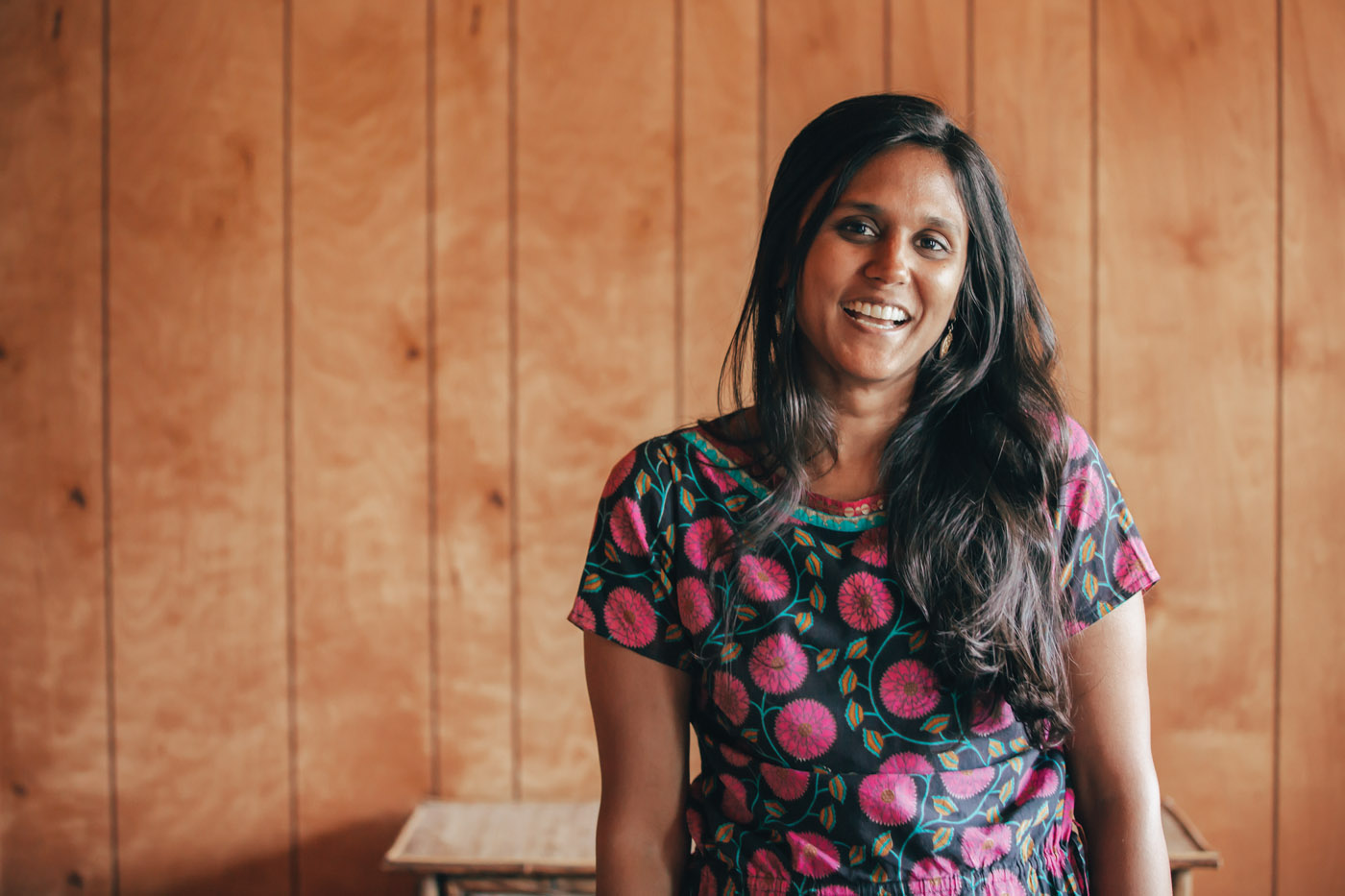
“My father is North Indian and my mom is South Indian, so we grew up eating both [cuisines] because my father likes to cook as well,” Agrawal says. “As I grew older, I really starting getting into the flavors of South Indian food and the complexity of those flavors.”
In 2009, Agrawal began her blog, ABCD’s of Cooking, which focuses on North and South Indian vegetarian recipes rooted in traditional cooking methods, as well as her own creations which mix Indian recipes with other cuisines and local ingredients. She teaches cooking classes, caters small parties, and co-hosts a monthly Indian-Chinese pop-up dinner series called Tangra. Agrawal and her husband, Ben, also began a line of achaar (Indian pickle), cleverly named Brooklyn Delhi. And to round things out, she is currently in the process of completing her first cookbook which will be published in March 2017 through Ten Speed Press (a Random House company).
Agrawal adds cut asparagus to the frying pan, mixing the vibrant green veggies with the heated oil and toasted spices, lentils, and whole chili pepper. I’m definitely getting hungry. To take my mind off my upcoming lunch, I ask how she got into writing her cookbook. “I was really starting to get into South Indian cooking and using a lot of my farm share, doing a lot of collaborations with farmers and growers and things like that,” she says. “So I started to really get a sense of knowing what I wanted to do the book on; I wanted to do the book on Bangalore-style cooking using local ingredients.”
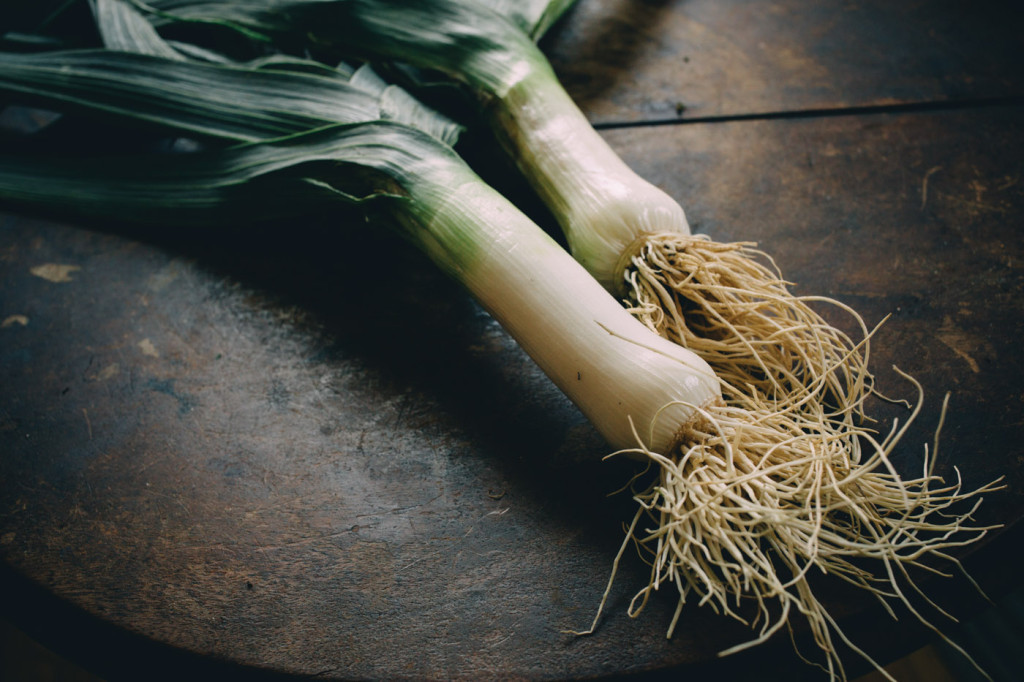
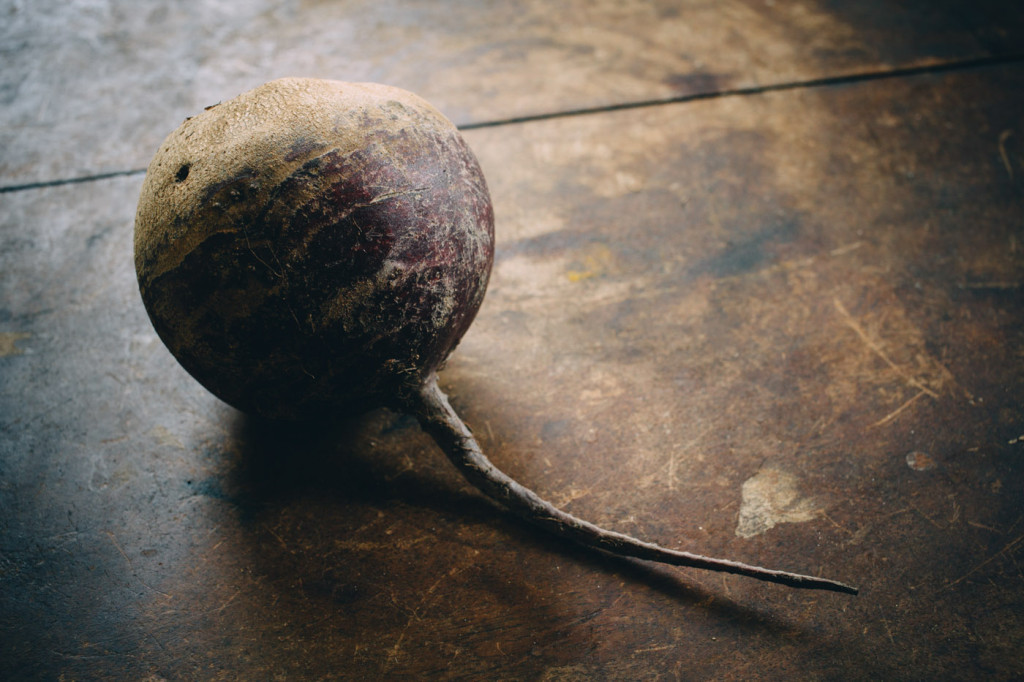
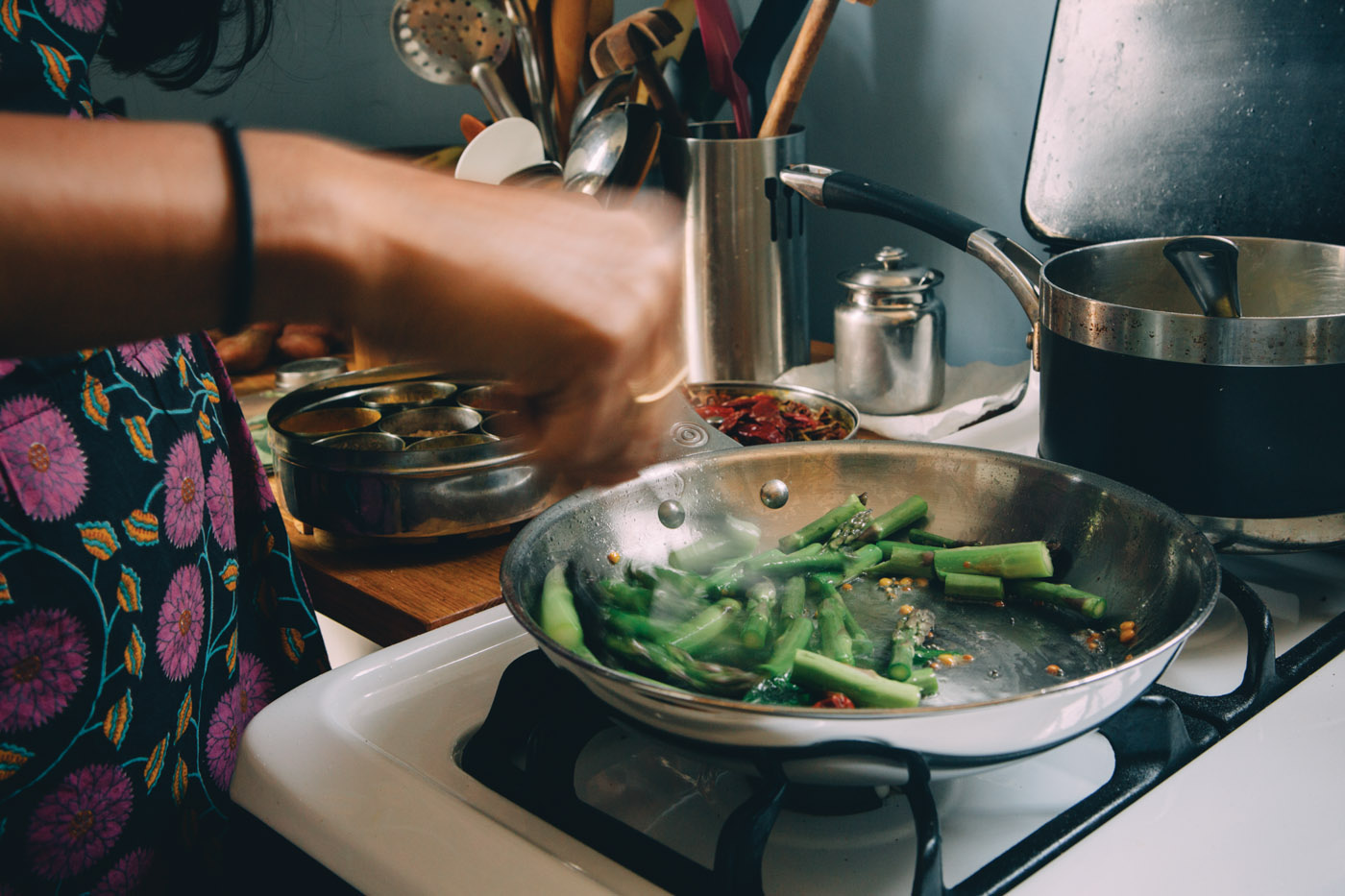
The process of putting together material for her cookbook also brought her closer to her family and roots. “Writing this book, I’m connecting with a lot of my family members and learning a lot more of my family history,” says Agrawal. “That’s the part of it that’s so personal to me. You feel a little bit disconnected sometimes if you have grown up in the U.S. but your family is from India, even though my parents do go back every year. There’s just something about the food––there’s like, ‘food memory.’ When I have that food, I remember things from when I was growing up or going to India to visit. I just feel like everyone in my family––like my aunts––are very passionate about keeping these recipes alive. By writing about it, at least there’s a written record of some of these histories of our family. I think that’s extremely important.”
The food Agrawal is writing about in her upcoming cookbook is specifically South Indian––lots of rice, lentils, and vegetables. She’s also pulling from precise states in that region. “The recipes are specific to my family within Bangalore, which is in the South Indian state of Karnataka. My family can be traced back to 950 A.D. in the region of Mysore. My mom’s family has been in that region for generations. We were farmers and to this day, the farm still grows some of the same crops.”
Variations within the recipes differ from house to house, even within her family. People find a way to make things the way they like them, and that is what is passed on within each home. Everyone has their own way of doing things. “I want to give ideas, not say these are the quintessential ways to make the dishes, because there is no such thing,” Agrawal explains. “Nothing is authentic; everything is borrowed or taken from other cultures––especially Indian food.” The influence from Persian culture and other groups that have come into India over centuries has shaped the Indian food we eat today, whether at home or at our favorite restaurants. When it comes to writing recipes, Agrawal has to toe the line between keeping with tradition and also making sure the recipes are accessible to an audience that may not know how to even toast spices. “It’s really starting from step one,” she says.
With the rice steamed and lentils cooked, Agrawal finishes pouring the last of her items into serving bowls, signaling that it’s time to eat. Given my North Indian background, I normally would know my way around an Indian menu. But as Agrawal places one colorful dish after another in front of me, simultaneously speaking each dish’s name, my limited knowledge of South Indian food made me feel like the novice at the table. Agrawal, like any gracious Indian host, serves me each item individually: leek huli, asparagus palya, beet raita, carrot kosambri and freshly steamed basmati rice. After hearing her explain each item, I see overlapping similarities between North Indian and South Indian food. Though the names are different, the essential ingredients––lentils, vegetables, yogurt, rice––are mostly the same. It’s the blend of spices (including dried red chilis) and the addition of coconut in the dishes that are key to making this lunch South Indian. Agrawal also opens a jar of Brooklyn Delhi, something I’ve been dying to try since I first read about it. I place a bit of tomato achaar on my tongue and am immediately wowed by the intensity of flavor. The tomato belts out its rich tomato-ness on my palate, and I’m thinking of ways to ask Agrawal for a to-go jar or two. I keep adding achaar to each bite and between mouthfuls of delicious food, I began hearing how her line of condiments came to be.
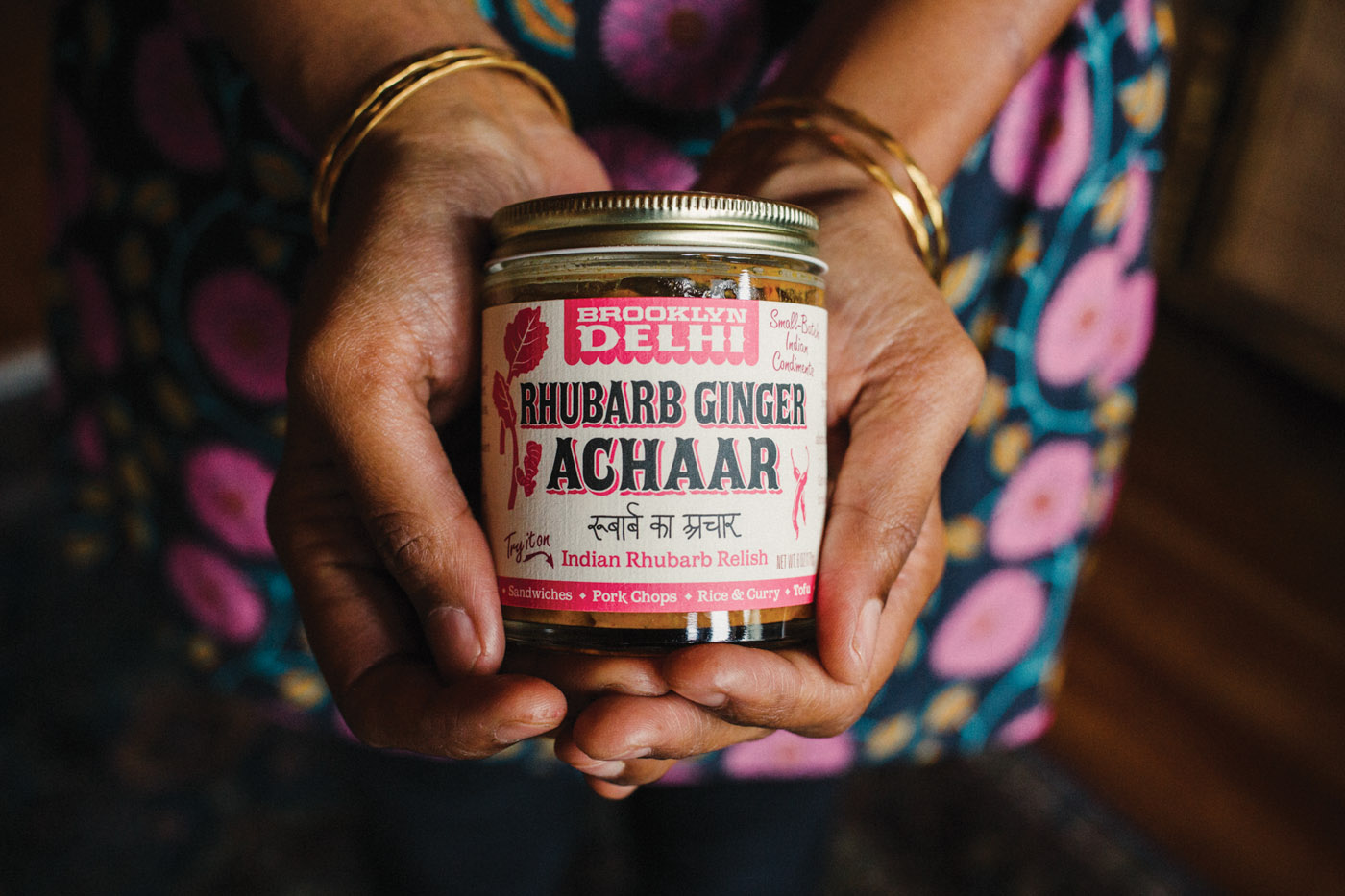
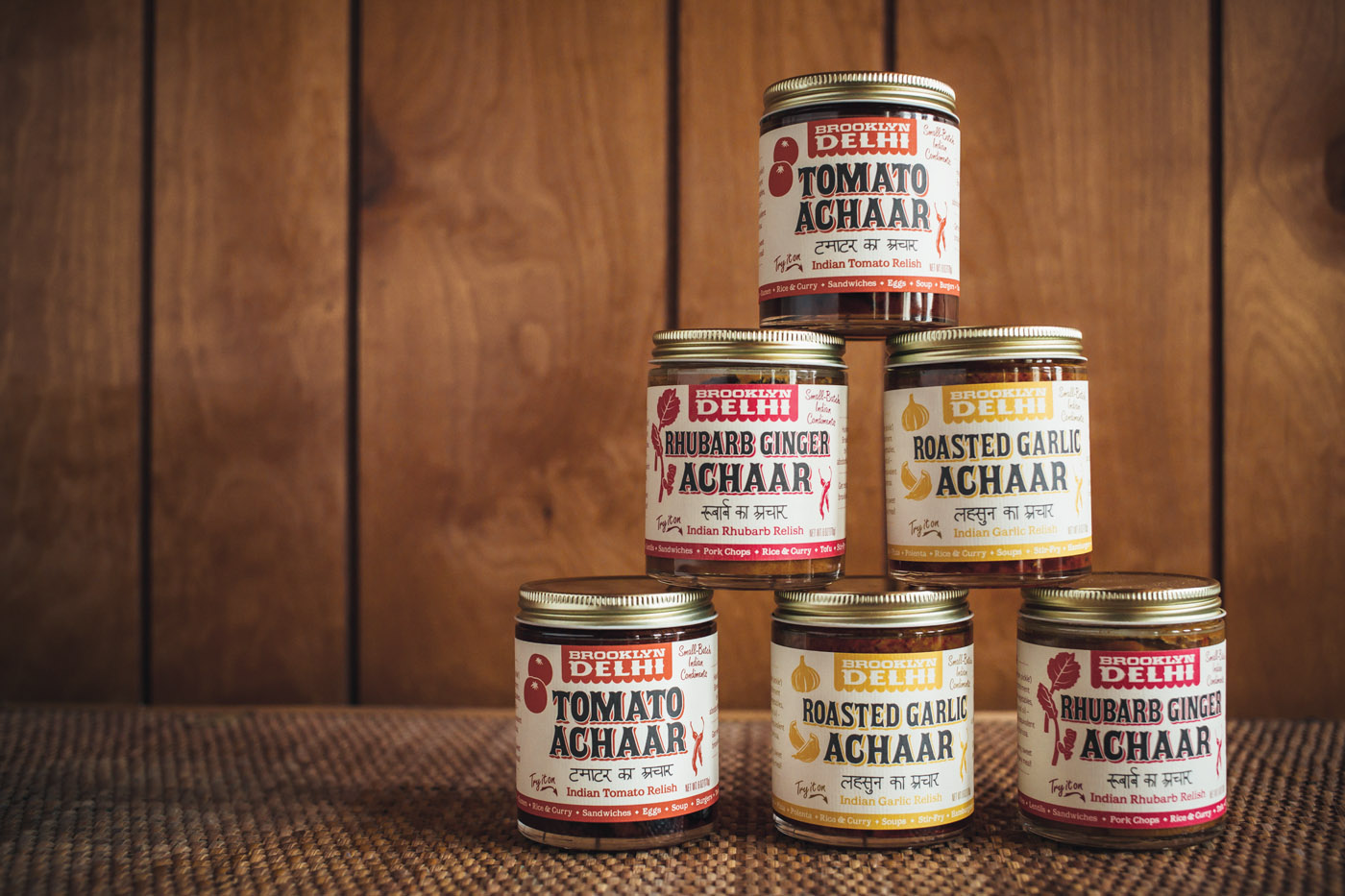
Using her grandmother’s achaar recipe as a starting point, Agrawal developed her Brooklyn Delhi Indian Relish by using a lot of the produce from her farm share, including heirloom tomatoes, garlic, gooseberries, ginger, and rhubarb. “I don’t love sweet things,” Agrawal muses. “At the time I was like, ‘I don’t want to make rhubarb pie!’ So I made a pickle out of the rhubarb and ginger instead.” She found herself swapping typical achaar ingredients––like green mango or lime––for other seasonal ingredients, without adding too much salt or oil typically found in other store-bought achaars.
She started serving the potent pickles at her pop-up dinners, generating curiosity amongst her guests. “People were like, ‘I’ve never had anything like this,’ because the flavor is so intense.” Her husband, a professional designer with a background in food package design, helped Agrawal create the look and feel for her line of achaars, pulling inspiration from handpainted truck and store signage commonly found in much of India. With support from her friends and family, Agrawal was able to go from recipe to retail-ready product in a matter of months. “Luckily, a lot of the recipes I had were already at the point of being shelf-stable,” she says.
She first introduced her jars of Brooklyn Delhi achaar at a local holiday market on a cold, snowy day in December 2013. There was a positive response amongst consumers, with some stores wanting to sell her product. Agrawal found a way to make larger batches of her achaar while still staying close to her community. “I make everything at St. John’s Bread & Life, which is a soup kitchen in Brooklyn. I rent space from them after they’re done with their lunch shift, and I employ workers from St. John’s Bread & Life to help me in the kitchen,” says Agrawal. “It’s a really good organization; they’re one of the largest soup kitchens in Brooklyn. They do a lot of work in the community.”
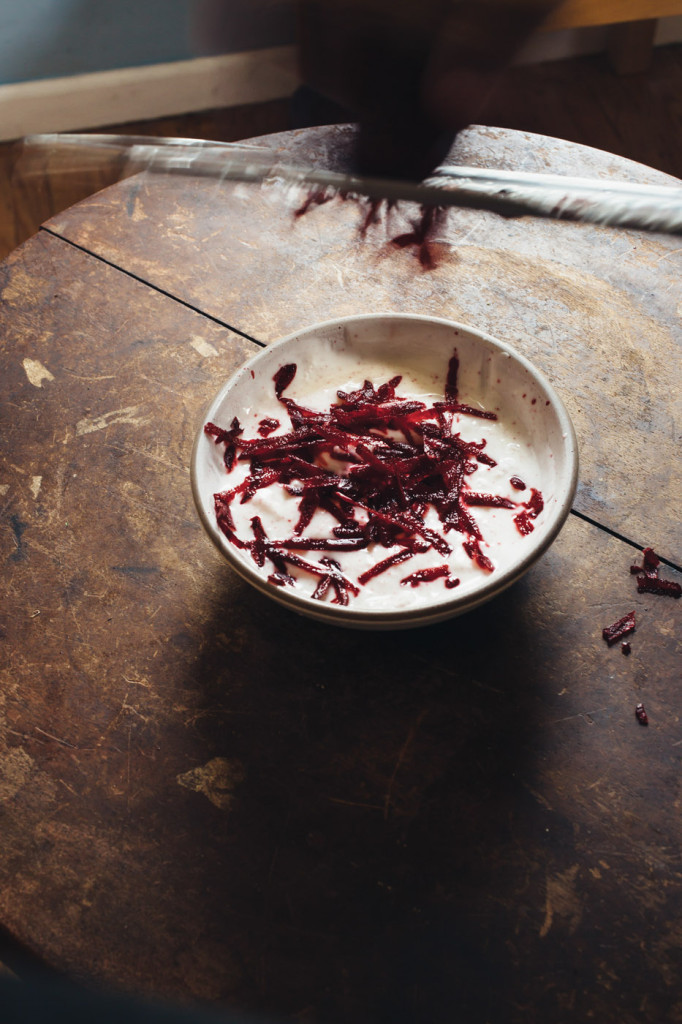
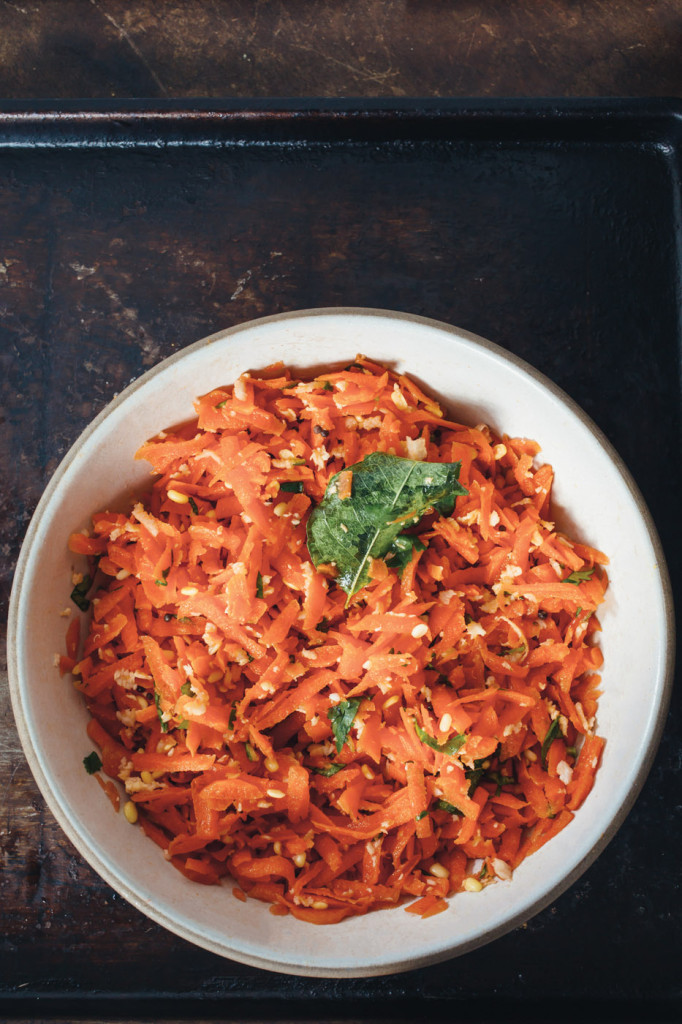
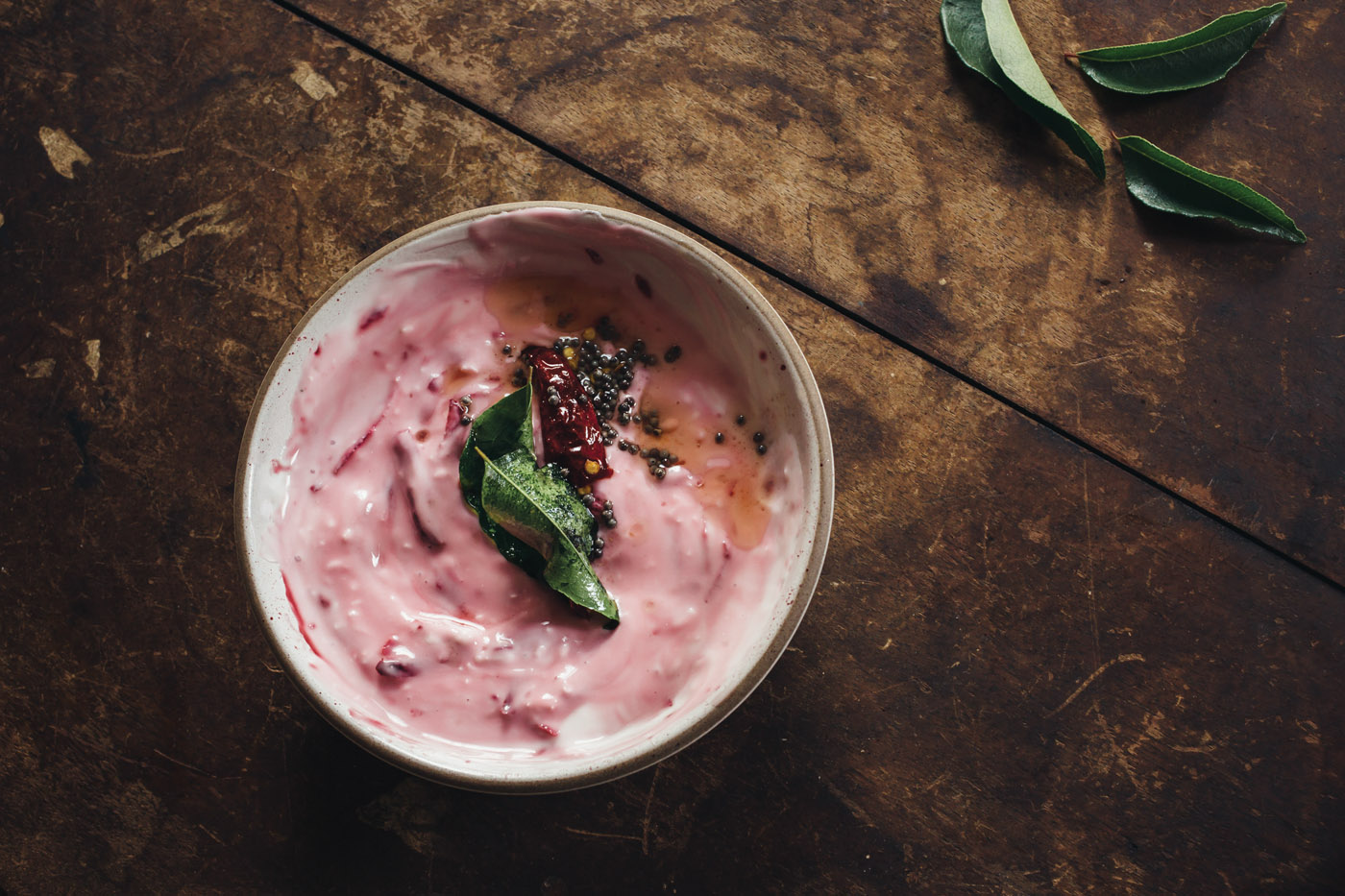
Agrawal started developing more achaar flavors, working closely with the farmers at Wilklow Orchards who have produce ready for her when she gears up to make her next batch. This collaboration lets her continue to use locally sourced ingredients, and to stay true to her original recipes. Today, Brooklyn Delhi has four flavors: tomato, roasted garlic, rhubarb ginger, and gooseberry.
Agrawal’s parents, to whom she jokingly refers as “produce snobs,” instilled in her and her brother the practice of going to the market daily for the freshest possible produce––a ritual that is very common all over India. Having a farm share is a great local resource for getting extremely fresh, high quality produce––with the added bonus of being a part of the community and supporting local farmers.
Some of Agrawal’s friends––those who have their own line of packaged goods or have written cookbooks––have guided her through the process, and she credits that close-knit community for her achievements. “I don’t think I could’ve done a lot of the things I’ve done without the community that I have here. You’re always helping somebody or somebody’s helping you,” says Agrawal. “There’s too much to figure out, having a food business. There are so many details––you cannot learn everything from a book.”

Agrawal has developed her style while also putting her unique stamp on this community of like-minded foodies. She also loves connecting with people. “I don’t want to be just a food blogger or writer. I want to get out there and I want people to try what I make––and watch people try it for the first time!” Agrawal says with a laugh. “That’s also what motivated me to start Brooklyn Delhi; I just want to reach more people with the food. Writing about food and having pictures about food is great, but people don’t get to experience it all from that.”
As our lunch comes to a close, I ask Agrawal about the most influential people in her life in terms of teaching her to appreciate food. “I was really close to my dad’s mom––my grandmother,” she says without hesitation. “She was so meticulous in the kitchen. Sometimes when I’m making food, I think about her. [That] makes me focus because I remember when she was teaching me, she wanted me to learn how she had honed her skills over time.” Agrawal also says food was a large part of growing up. “My parents were very particular about having home cooked meals every day, even though they both worked. They worked until six every day, but they found a way. My father would make a large amount of chapati (unleavened Indian bread) dough so that when he’d come home, he could just make them. My mom would have cooked daal (lentils) ready to go. They figured out these ways to make it happen. I think that dedication has always stayed with me. I understand the importance of eating together, cooking home cooked food.”
After three hours, I feel as though the time has passed chatting and sharing a meal with a friend. There’s something about swapping childhood stories, growing up in somewhat similar homes, and recounting visits to the same country that provides a comfort level atypical of most interviewer-interviewee meetings. Before I leave, Agrawal hands me a small, brown paper bag. Inside are two jars of Brooklyn Delhi, a sweet response to the mental vibes I had been sending her over lunch. It’s always a joy to meet people who are so passionate about what they do. But it is all the more special when they remember to honor those that have shown them the way.
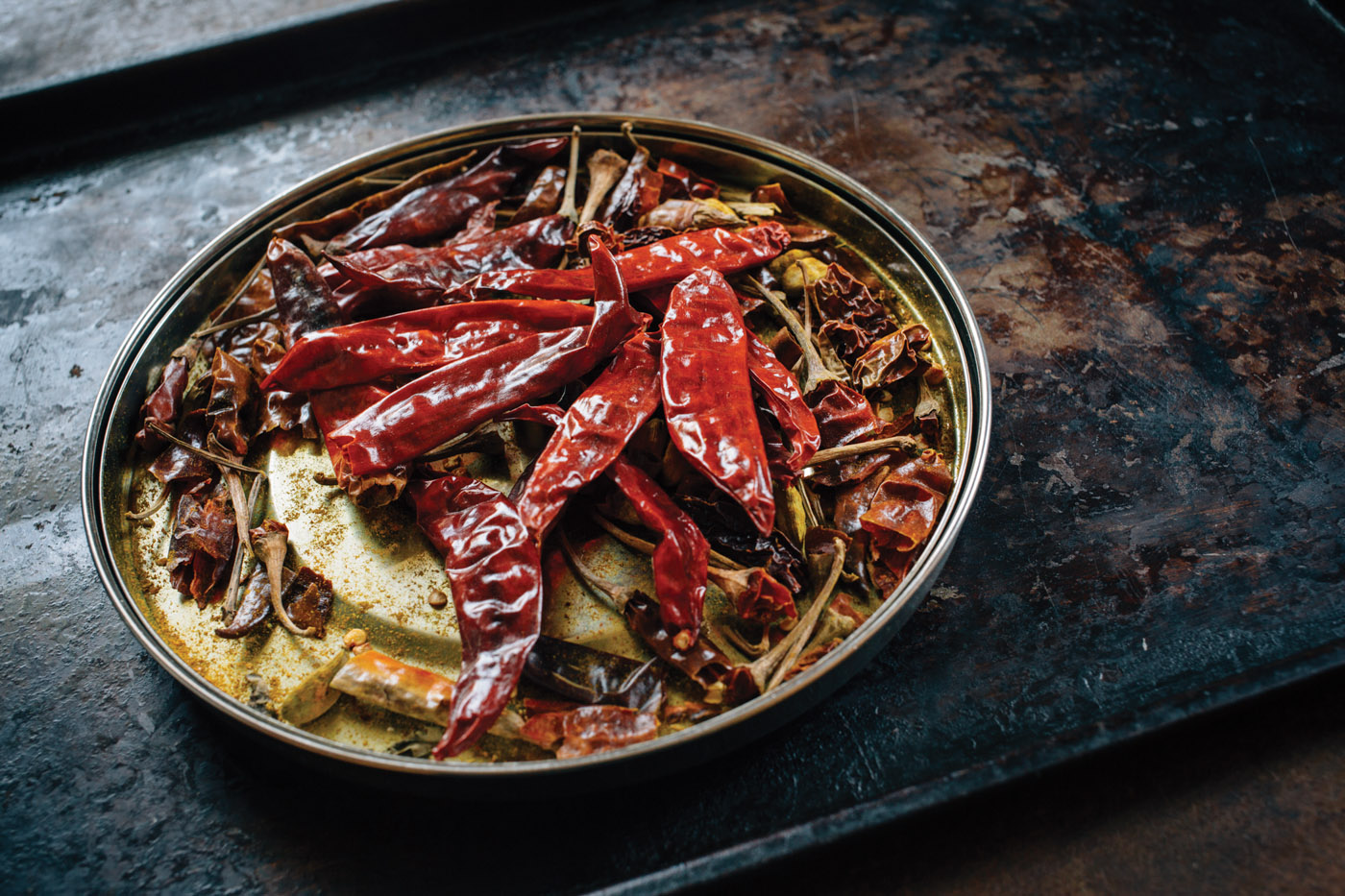







Our comments section is for members only.
Join today to gain exclusive access.